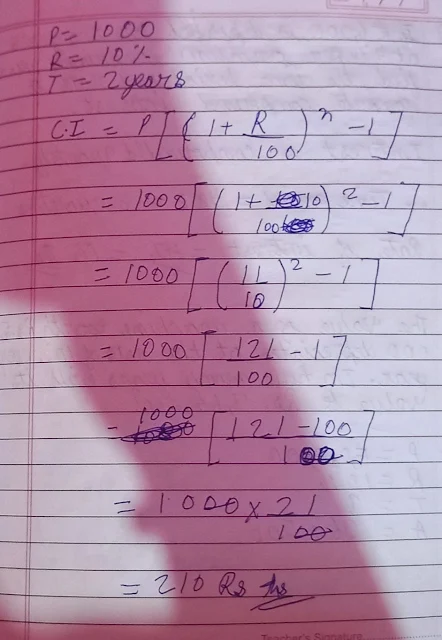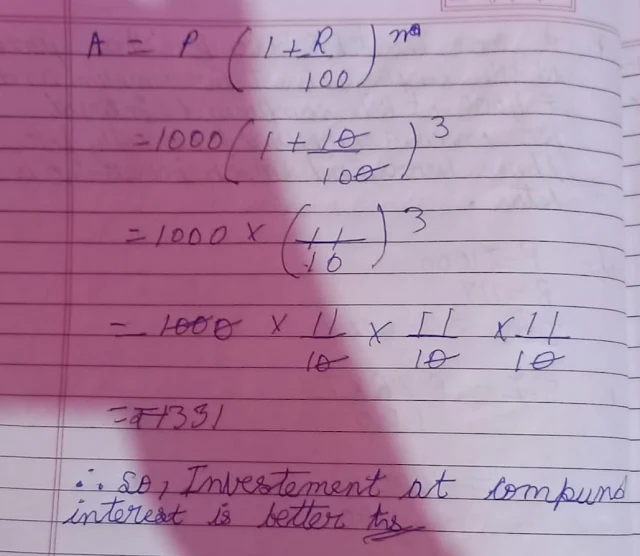Chapter 6 | Compound Interest | Class-8 DAV Secondary Mathematics
Unit 6 Brain Teaser | Compound Interest | DAV Solution Class 8 Secondary Mathematics
Q1A. Tick the correct option.
(i) For a given rate of interest and time, what is more profitable to the depositor?
(a) compound interest (b) simple interest (c) both are equally profitable (d) cannot be determined
(ii) A sum of Rs. 10,000 at 8% per annum for six months compounded quarterly amounts to
(a) 400 (b) 404 (c) 408 (d) 10,404
(iii) In A = p(1 + R/100)^n , A stands for
(a) time period (b) principal (c) principal+interest (d) interest
(iv) If the number of conversion periods is greater than or equal to 2, then compound interest is
(a) less than simple interest.
(b) greater than simple interest.
(c) less than or equal to simple interest.
(v) Reema wants to do a one-year deposit. She should opt for
(a) a simple interest of 10%.
(b) a compound interest of 10% compounded quarterly.
(c) a compound interest of 10% compounded annually.
(d) a compound interest of 10% compounded half-yearly.
Q1B. Answer the following questions.
(i) Find the compound interest on Rs. 1,000 at 10% per annum for two years.
(v) If Rs. 20,000 is deposited for three years at 5% compounded annually, then what will be the principal for the second year?
2. Preeti invested ₹ 50,000 at 8% per annum for 3 years and the interest is compounded annually. Calculate:
(i) The amount standing to her credit at the end of the second year.
(ii) The interest for the third year.
3. A man had ₹75,000. He invested ₹35,000 in a company which pays him 9% interest per annum and he invested rest of the money in another company which pays him 9.5% interest per annum. Find the total compound interest received by him after 2 years.
5. Pooja started a business by investing ₹2,00,000. During the first three successive years, she earned a profit of 5%, 8% and 12% per annum respectively. If in each year, the profit was added on the capital at the end of the previous year, calculate her total profit after 3 years.
7. A man invested ₹ 1,000 is invested for three years at 11% simple interest per annum and another 1,000 is invested at 10% compound interest per annum compounded annually for 3 years. Find which investment is better.
8. M/s Heera Associates let out ₹4,00,000 for 1 year at 16% p.a. compounded annually. How much they could earn if the interest is compounded (i) half-yearly (ii) quarterly?
10. The annual rate of growth in population of a certain city is 8%. If its present population is ₹1,96,830, what was the population 3 years ago?

































